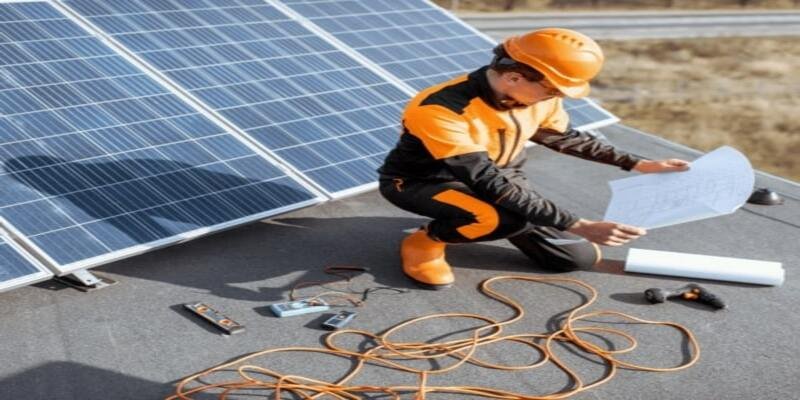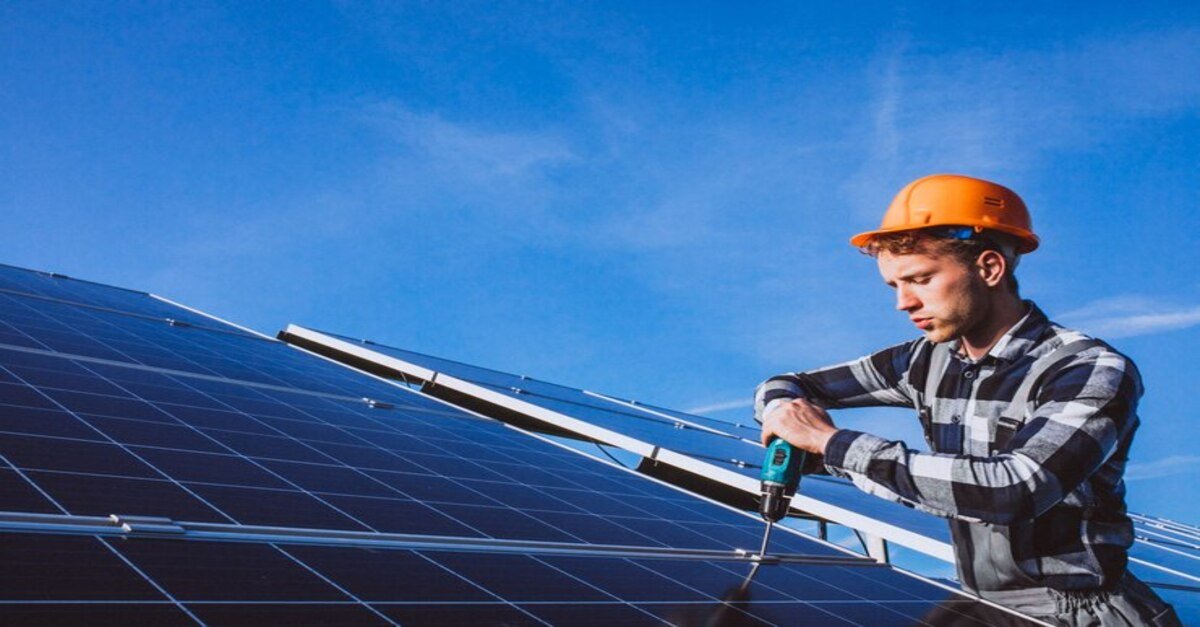With the global sustainability movement gaining momentum, homeowners are searching for ways to reduce their energy use and, ideally, save some money. Solar power, once considered an eco-friendly innovation, has gained popularity as a common way for people to use the sun’s energy for their needs. But even with its increasing popularity, many people still find solar panel installation to be a little strange. This extensive guide provides an overview. From ensuring your house and roof are prepared for solar energy to going through the actual nuts and bolts of installation to long-term maintenance, we’ll provide a Comprehensive Guide to Installing Solar Panels.
Safety Advice
It is not simply a saying to put “safety first” when handling electricity; it is a rule of thumb. It is critical to understand the safety concerns associated with solar panel installation before you even consider installing them.
Understanding Electric Hazards
Since solar power systems produce electricity, electric shock is risky. Until you disconnect them and confirm they are dead, all components of your solar panel installation wires, connectors, and inverters must be treated as live.
Evaluating the Dangers
Look around you. Are there any power lines overhead that you should be concerned about? What kind of environment are you working in, and could the weather throw surprises at you?
Setting Up Your Area and Yourself
You should be prepared with more than just your tools. Best practices include wearing safety glasses, electrically insulated gloves, and cooperating with a partner. Regarding your workspace, ensure a safe route to the electrical panel and clear the working area.
The No-Go Zone
When it comes to safety, the best perimeter is a no-go zone. Ensure that non-essential personnel (pets, kids, and even curious neighbors) know to steer clear of the installation area.
Tools and Materials You’ll Need
You’ll need more than just the panels themselves because solar installation is one of the most labor-intensive tasks. Here’s a rough inventory of the items you must have.
Basic Tools
- Screwdrivers
- Wrench set
- Hammer
- Pliers
- Wire strippers
- Safety equipment
- Ladder
Specialized Equipment
- Torque wrench
- MC4 connectors
- Solar panel mounting structures
- Charge controller
- Power inverter
- Batteries
- Energy meter
Every piece of equipment has a distinct function during the setup procedure, so you need to have everything you’ll need.
The Step-by-Step Installation Procedure
You’ve checked all the safety boxes and gathered your supplies, and your enthusiasm for do-it-yourself projects is considerable. What comes next? From getting ready to turn on the light, we’ll walk you through every step of the procedure. Despite being a broad summary, this should provide a decent idea of what to anticipate.
Preparation
Ensuring the location is prepared for installation is just as crucial as obtaining the necessary licenses and authorization, but it is also an essential component. Important aspects of preparation include clearing the workspace, verifying the layout, and ensuring the planned installation area receives enough sunlight.
Obtain Licenses
You must secure the proper permits from your local government before beginning any installation. This will guarantee that your system complies with all construction and safety codes.
Request Incentives
Several governments provide tax breaks or refunds as incentives to install solar panels. Identify and apply for any incentives offered before beginning the installation procedure.
Setting Up the Racking System
A racking system holds Your solar panels in place on your roof or the ground. The racking method determines whether you put them as an independent structure or on the roof.
Installing Your Panels
Attaching the solar panels to the racking structure is a delicate process. It involves correctly setting them to receive the most sunlight possible all day.
Linking All Things Together
After mounting your panels, it’s time to run cabling between them and your inverter, charge controller, and battery bank, among other system components.
The Core of the Structure
The inverter and charge controller are your solar power system’s brains. They control voltage and transform solar energy into a form that may be used by your home’s electrical system or stored in a battery bank for later use.
Battery Banks
Batteries are optional Depending on how you use your solar energy. You can store energy to be used as backup power or during times of low light.
Connecting to Your Home’s Power
Before you turn on your solar panels, make sure they are securely mounted by double-checking all electrical connections.
Wiring Management
Proper wiring management is necessary for your solar panel system to be safe and effective. When connecting wires, carefully read all instructions and use the correct tools and equipment.

Testing
Now that everything is connected, the system needs to be tested. You want to ensure that your system generates power and flows where it should when those panels operate.
Maintenance and Troubleshooting
Your panels are now operational. It’s time to talk about continuing maintenance now. Although they don’t require any care, solar panels do need some.
Regular Check-Ups
At least once a month, check your panels for dust, dirt, or other physical damage.
System Check
Testing your system once a month will assist in locating any power output difficulties that might indicate issues with the wiring, inverter, or panels.
Troubleshooting
You’ll need to troubleshoot if you do experience output problems. This could be as easy as changing a blown fuse or as tricky as figuring out how your panels become.
If In Doubt, Call for Help
Call a professional if the problem is complicated or you don’t feel comfortable “hitting around under the hood” of your solar system. Don’t risk damaging your system or yourself..
Requirements Before Installing Solar Panels
Before you even start the process of installing solar panels, there are a few things you must consider.
1. Determine Your Needs for Energy
Choosing the amount of energy you want your system to produce is a step in the solar energy process.
2. Number of Sun Hours
Where you live plays a crucial role in the efficiency of your solar panels. The more sunlight your panels get, the more energy they can produce.
3. Size & Design of Your Home
The size of your home and the layout of your roof play a significant role in the type and number of solar panels you can install.
4. Roof Condition:
Your roof will need to be strong and in good repair to support the weight of the panels.
5. Roof Strength:
An engineer can determine if your roof can take on the additional weight of solar panels.
Conclusion:
Installing solar panels is the first step toward sustainability and independence. It’s an investment that saves energy and contributes to a greener world. You can empower your home for a solar-powered future through proper installation techniques, system maintenance, and a focus on safety.
